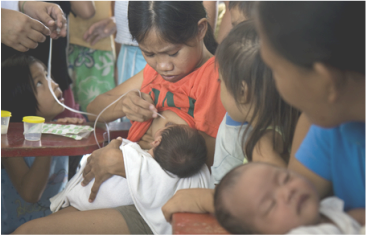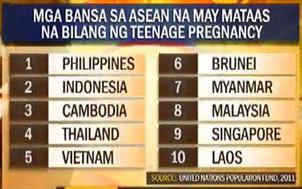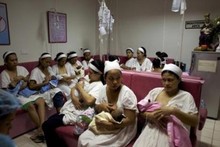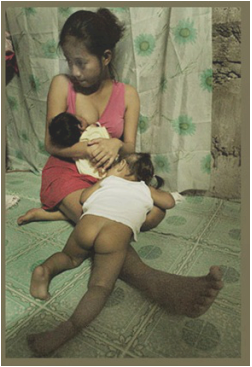The National Youth Commission, supported by the Department of Health and the World Health Organization, convened the 2014 National Summit on Teen Pregnancy last April 24. This summit, which saw the active participation of adolescent youth, delivered a clear message: Adolescent sexual and reproductive health (ASRH), or the lack thereof, is fast becoming the defining issue of this generation of young Filipinos. Without a robust response from all stakeholders, the Philippines is on track toward a full-blown, national teenage pregnancy crisis.
Staggering facts support this call for concern. Recent (2014) data from the Philippine Statistical Authority (PSA) reveal that every hour, 24 babies are delivered by teenage mothers. According to the 2014 Young Adult Fertility and Sexuality (YAFS) study, around 14 percent of Filipino girls aged 15 to 19 are either pregnant for the first time or are already mothers—more than twice the rate recorded in 2002. Among six major economies in the Association of Southeast Asian Nations, the Philippines has the highest rate of teenage pregnancies and is the only country where the rate is increasing, per the United Nations Population Fund.
According to Josefina Natividad, YAFS coordinator and director of the University of the Philippines Population Institute, young Filipinos have limited access to sex education and ASRH services, especially if they are underage and unmarried. Seventy-eight percent are not using any form of contraception or protection against sexually transmitted diseases and infections when they are having sex for the first time. While government programs aim to delay the beginning of childbearing and hasten fertility decline, teenage pregnancies continue to increase. Perhaps it is really time for a new and more collaborative strategy?
Data show that pregnant teenagers in the Philippines are mostly 17 to 19 years old. They live with their mothers, parents, or relatives. The father of the child is, in most cases, a teenage boy.
Reasons for becoming pregnant among teenagers include: unplanned sexual encounters (“getting caught up in the moment”) and peer pressure; lack of information on safe sex; breakdown of family life and lack of good female role models in the family; and absence of accessible, adolescent-friendly clinics.
Teenagers from poor backgrounds are disproportionately represented among pregnant teenagers. However, experts have argued that teenage pregnancy should be understood as a symptom of dire economic conditions rather than a cause of it. Teenage pregnancy perpetuates the cycle of poverty and inequality because most pregnant teenagers have no source of income and face greater financial difficulties later in life. This is because they drop out of school and are less likely to pursue further education or skills training.
Teenage mothers face critical health risks, including: inadequate nutrition during pregnancy due to poor eating habits; dangers associated with the reproductive organs not ready for birth; and maternal death due to higher risk of eclampsia, among others.
Alarmingly, while maternal deaths are decreasing in the Philippines, teenage maternal deaths are increasing. Ten percent of pregnant teenagers died in the last year, according to the PSA. Data from the WHO also show a high and increasing incidence of fetal death in Filipino mothers under 20.
At the end of the teenage pregnancy summit, the participants strongly endorsed a comprehensive sexual education curriculum; forging a “Batang Ina” social movement; and establishing adolescent-friendly spaces. The enactment of the Responsible Parenthood and Reproductive Health Act was also recognized as an important step to make ASRH services more accessible to those in need.
As an international child rights organization, Plan International believes that the rights and needs of adolescent girls and boys, including their right to access ASRH services, must be ensured. In our work in the Philippines, ASRH continues to be a priority in line with our global “Because I am a Girl” campaign and national Batang Lusog program.
We are implementing ASRH interventions in Southern Leyte and Eastern Samar, where cases of teenage pregnancy are increasing. Youth-Friendly Spaces are being established to provide peer education and counseling on ASRH and rights. This is complemented by our response to eliminate gender-based violence in communities by establishing Women-Friendly Spaces. These measures help prevent teenage pregnancy by disseminating the right information about the risks and impacts of teenage pregnancy on the teen mom and the infant. An exploratory study by Plan International on the rising incidence of teenage pregnancy in “Yolanda”-affected areas is also being designed.
In the face of numerous challenges that Filipino adolescents face every day—discrimination, gender-based violence, harmful gender stereotypes—they must be equipped with the life skills and assets to help them make the best decisions for themselves and their community. When adolescents choose to have sex, they have a right to access not just information but also inclusive ASRH services.
At the end of the day, when an adolescent, especially a girl, knows her rights, is empowered to choose, and is heard, she can improve not only her life but also the life of her immediate and future families. So, maybe it’s time to have this discussion with your (grand) daughter or niece now?
Carin Van der Hor is the director of Plan International Philippines and is the mother of two teenage girls.
source: opinion.inquirer.net/74517/teenage-pregnancy-among-todays-filipino-youth






